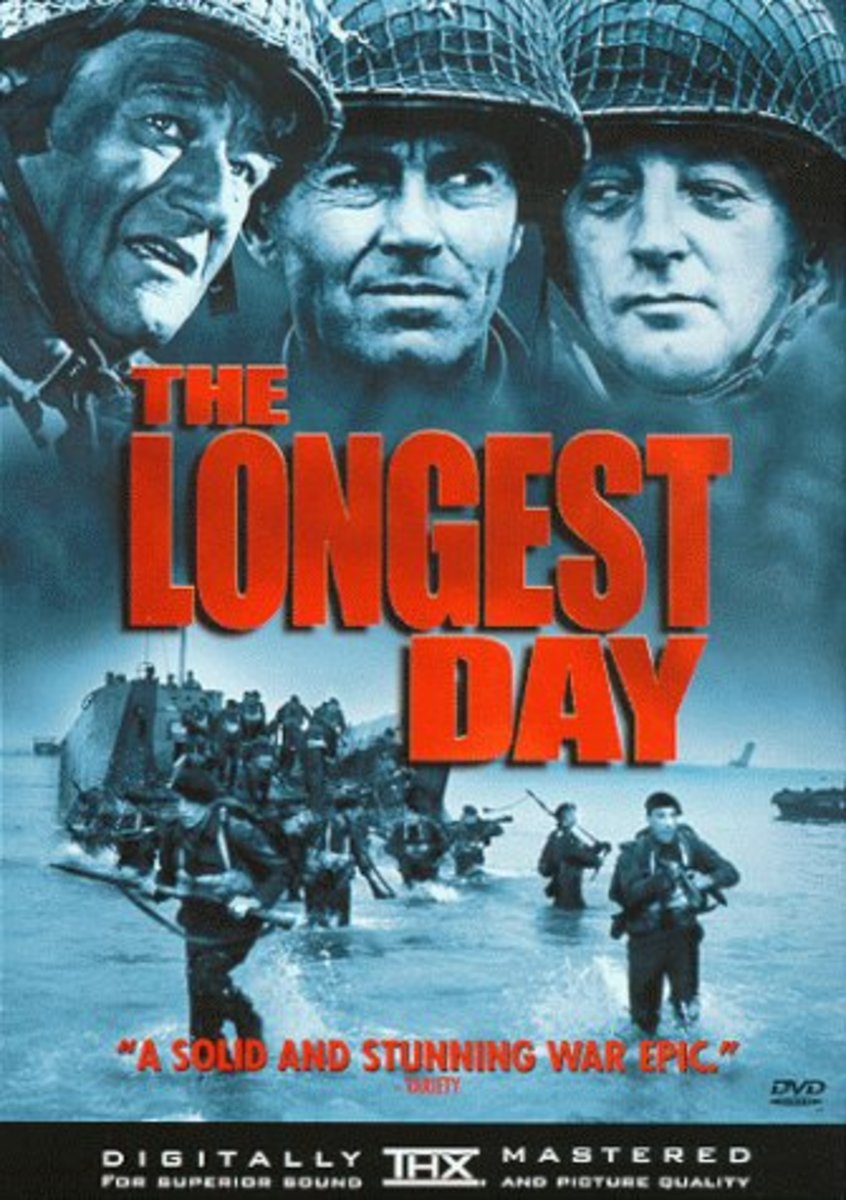
“This is the day that changed the world… when history held its breath.” So reads the rather portentous tagline for the 1962 World War 2 epic The Longest Day. In scope, worldwide appeal and sheer spectacle, it was perhaps the pinnacle of the epic movie, but there’s another important aspect to the Longest Day; a second tagline that simply exclaimed, “42 International Stars!”
There really hasn’t been anything like The Longest Day before or since. The privates on parade include Roddy McDowall, Red Buttons and pop star Paul Anka. The top brass, meanwhile, comprises Richard Burton, Roberts Ryan and Mitchum and, as Teddy Roosevelt, Henry Fonda. Then you have Sean Connery starring opposite his future Goldfinger foe Gert Frobe, Rod Steiger as an extremely shouty destroyer captain, and John Wayne (who, ironically, refused to fight in WW2 proper) as the formidable Lieutenant Colonel Benjamin Vandervoort. French war heroes are played by French stars, Germans by German stars and so on, with everyone speaking in their own language and subtitled to allow maximum international exposure.
If it owed its Hollywood phone book casting strategy to the Biblical epics of the 1950s, The Longest Day owes its existence to producer Daryl Zanuck. Not only is he said to have shot roughly half the footage as an uncredited director, he also dipped into his own pocket when the picture eclipsed its $8 million budget. But re-enacting the D-Day landings was too great a feat for even the resourceful Zanuck to accomplish single-handedly. To lick Cornelius Ryan’s factual account into a screenplay, he hired five writers including James Jones, a WW2 veteran and author of The Thin Red Line. Meanwhile, Bernhard Wicki, Ken Annakin and Andrew Marton were brought on board to direct the German, English and American perspectives. The action scenes, on the other hand, were orchestrated by Gerd Oswald and Zanuck himself.
Although some execs were worried that its fire had been stolen by Henry Koster’s D-Day: The Sixth Of June (1955), The Longest Day blew both its predecessor and most other war movies clean out of the water. While previous pictures had relied on clever blocking and quality editing to imply that their limited extras were a far larger fighting force, here entire platoons poured into the Normandy countryside. The set pieces just keep on coming throughout the movie, from the storming of the cliffs at Pointe Du Hoc to the Luftwaffe’s sole strafing run up the beaches to the incredible one-shot assault on Ouistreham. Each has a scale and violence that, even today, equals or betters the more explicit battles of Saving Private Ryan.
More...
If the decision to re-enact the landings on the very beaches where they occurred was bold (if not a little tasteless), the action scenes alone can’t account for the film’s enduring reputation and spectacular admissions – almost 12 million Americans saw it during its first year on release. A more likely reason might be that Zanuck’s picture contains elements of all the other war films of the previous two decades. So there are exciting gung-ho Marines dashing across bullet-strafed beaches in one scene, followed by stiff-upper lip Brit pilot Richard Burton dropping quips like, ‘The thing that’s always bothered me about being one of The Few is that we keep getting fewer.’ There are also shades of infantry veteran Sam Fuller’s ‘War Is Hell’ movies in scenes like the paratroop drop on Saint Mere Eglise, where the Americans are shot from the sky and fall into burning buildings. To put it another way, watching The Longest Day is like taking a complete tour through British and American war cinema, from Attack! to The Young Lions.
A superb compendium piece, the film is not without its flaws – the dialogue tends towards the melodramatic and there are times when many of the 40 stars have very little to do. But it’s not every day you get to watch two genuine war heroes re-stage their exploits at the very locations where they actually took place - in The Longest Day, we get to spend time with British actor Richard Todd, who participated in the real glider assault on the Orne River Bridge, and Joseph Lowe, who originally scaled the 100ft cliffs at Pointe Due Hoc under heavy German fire on 6 June 1944.
Filming the moment that the Third Reich suffered its first mortal blow could have been an appallingly jingoistic affair. Yet unlike Spielberg’s US-biased Private Ryan, all countries are treated fairly, from the Resistance members fighting on their home soil to the German officers who realise that this is the beginning of the end. Indeed, The Longest Day was made too long after World War 2 to be triumphalist and too long before Vietnam to be considered rabble-rousing. It is instead a monument to a very popular form of Hollywood action movie, and to a truly extraordinary day, one which showed that while war is indeed hell, it’s a necessary adjunct to thrashing fascism.